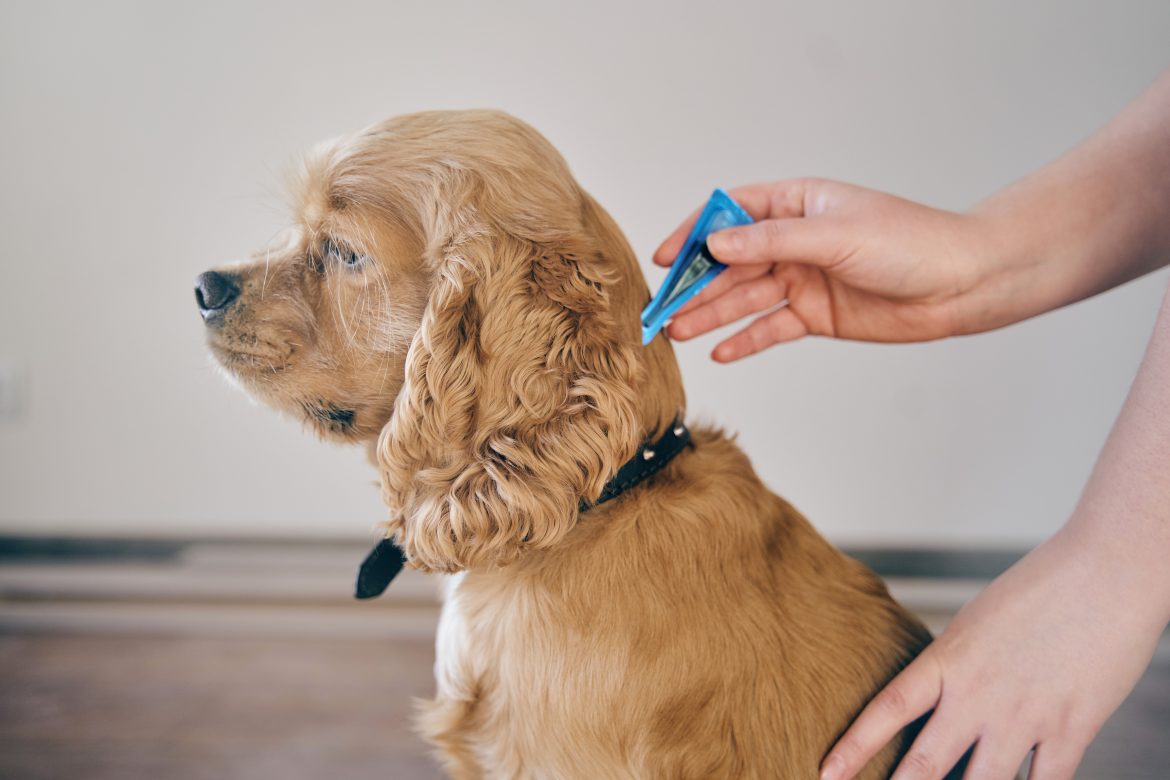Most fur parents will need to learn about flea treatment for cats and dogs at least once in their lives. When it comes to fleas (or any pests like ticks, worms and more, for that matter), the best way to treat your pet is to prevent them from getting fleas in the first place.
Find out more about pet insurance that covers routine healthcare costs like tick and flea treatment and deworming plus more here.
Sometimes, though, life happens, and you find your pooch or kitty has a flea infestation. Don’t worry, it’s not the end of the world. We’re here to give you a rundown of what you should do in this situation.
Why are Fleas a Problem?
Fleas can cause a problem for both your pet AND you! Their bites and saliva cause itching and can even cause allergic reactions in both humans and animals.
Fleas can also harbour and spread a number of diseases to your pets, some of which can also affect humans, including Tapeworms and Flea Allergy Dermatitis.
Flea Treatment for Cats and Dogs
The Lifecycle of a Flea
The first step of treating fleas is knowing more about them. Fleas go through four lifecycle stages:
1. Egg
2. Larvae
3. Pupa
4. Adult
You might be wondering why this is information you should know. Successful flea treatment for cats and dogs relies on targeting the fleas in their different life stages. You might be able to remove adult fleas with a flea comb, but miss some eggs or larvae, which will then become adults themselves and lay even more eggs, continuing the cycle.
Where Fleas Can Be Found
It is a misconception that fleas will only be found on your pet if they have a flea infestation.
Although fleas feed on blood, the adults will lay their eggs in a variety of places, including in your pet’s fur, deep in the carpets in your home, or in tall grass in your garden. If there are adult fleas present, it is almost guaranteed that there are fleas in various life stages around your house. This means that, in order to get rid of all the fleas, you’ll need to tackle the problem from all angles. To do this, you must treat your pet and its living environment at the same time. Depending on where your pet is allowed to go, this may include your whole house or yard.
Discover: Pet healthcare and vet visits – planning for your pet’s routine care
How to Treat Your Home
First, we will look at how to tackle an infestation in your home.
- Use a powerful vacuum on all floors, upholstery, and mattresses. Cracks, gaps in baseboards, and other tight spaces are good hiding places for fleas and their eggs, larvae, and cocoons. If you can, use a vacuum with a bag so you can throw the whole thing out without coming in contact with its contents.
- Employ a steam cleaner for carpets and upholstery, including pet beds. The combination of high heat and soap tackles fleas in all their life stages. Pay careful attention to any spots where your pet often lies down or spends a lot of time.
- Wash all bedding, including your pet’s, in hot water and detergent. Once washed, dry the bedding it at the highest heat setting in your tumble dryer, if you have one. If the infestation is very severe, consider getting rid of old bedding and starting fresh.
How to Treat Your Pet
Now we will take a look at the steps for flea treatment for cats and dogs.
- Kill fleas with topical or oral treatment. Treatment doses are sorted by pet type, age, and weight. Flea treatment for cats and dogs, like Frontline or Bravecto, have topical (or spot-on) treatments, as well as ingestible options. Generally, topical treatments have active ingredients that spread through your pet’s skin, killing pests on contact. Oral treatments work through the active ingredients going into your pet’s bloodstream and killing the pests when they bite your pet. Most fleas will be killed within several hours, but it can take a few days for a medication to have its full effect.
- Kill fleas with a pet-safe spray. It can help to use flea sprays in your home, as these kill fleas on contact. However, many sprays for the home are not pet-friendly and could be toxic to animals. Always follow instructions and ensure the area is dry or clear before allowing humans or pets back in the room. Do not spray flea spray on your pets unless the instructions directly state to do so.
- Wash your pet’s bedding in hot water every couple of days. Because fleas go through a lifecycle, and it takes some time to kill off an infestation in its entirety, it is a good idea to keep washing your pet’s bedding every few days until the infestation is gone. As mentioned before, if you have a tumble dryer then dry the bedding on the highest heat setting after each washing. Make sure any cleaning chemicals or soaps that you use are pet-friendly.
- Wash your pet using flea shampoo. Flea shampoo is another product that kills fleas on contact, and washing your pet with an appropriate flea shampoo is a crucial step to tackling an infestation. While shampoos may kill the fleas directly on your pet, they won’t do anything to stop an infestation in the home environment.
- Use a flea comb. Flea combs are designed with fine teeth that can trap fleas while still allowing your pet’s fur to pass through. Keep a bowl of warm, soapy water nearby to drop any fleas into as you remove them. Focus especially on the neck and tail, where fleas are most commonly found. Even if the infestation seems under control, continue combing your pet every couple of days to make sure the fleas don’t return.
Read next: How to wash your dog: Things you may not know about
By combining environmental treatments and treating the infestation on your pet directly, you can effectively get rid of a flea infestation and prevent your pet from recurring infestations. Once your pet is pest-free, it is important to keep up with regular preventative measures. If you have any queries or concerns about regular flea treatment for cats and dogs, ask your vet for advice and suggestions on the best products to use or routes to take.
Yours In Not-So-Average Pet Advice
The Petinsurance.co.za Team
#NotYourAveragePetAdvice



